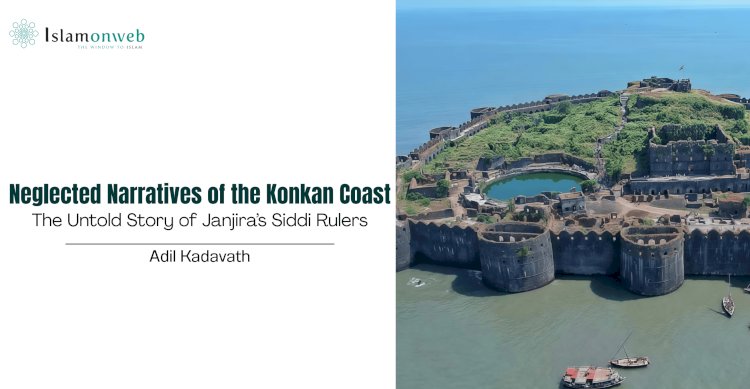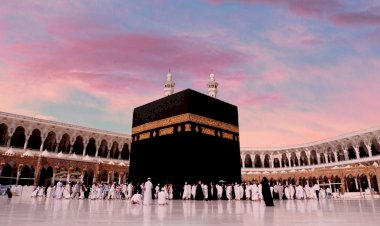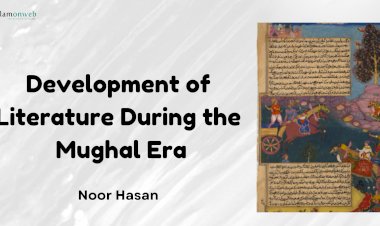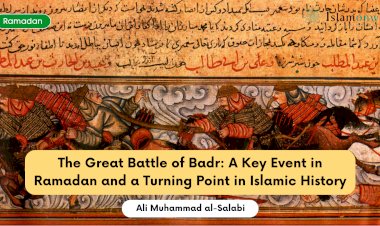Neglected Narratives of the Konkan Coast: The Untold Story of Janjira’s Siddi Rulers
The history of the Indian subcontinent is shaped by the confluence of diverse cultures, peoples, and political powers. Among these, the African-origin Siddi community holds a unique yet often overlooked place. Emerging from forced migration through the Arab and Portuguese slave trade, the Siddis—also known as Habshis—rose to remarkable prominence in western India, particularly through their control of the fortified island-state of Janjira off the Konkan coast.
Janjira became both a fortress and a formidable naval stronghold under Siddi rule. Surviving authentic records highlight their naval strength, diplomatic acumen, and military resistance—not only against colonial powers such as the Portuguese but also against regional rivals like the Maratha kingdom. Their story unfolds within the wider geopolitical framework of the Mughals, Marathas, and later the British.
Through this lens, the Siddis of Janjira emerge not merely as defenders of their island but as influential actors in the coastal power politics of early modern India—embodying a legacy of resilience, adaptation, and strategic brilliance.
A Historical Account of the Siddis
According to Siddis of Janjira and the Portuguese by Raghuraj Singh Chauhan, the origins of the Siddis trace back to East Africa, particularly the regions of Ethiopia and Sudan. The slave trade route from Opone to the port of Thana is described by Russian traveller Afanasy Nikitin (1470 CE) and by Ibn al-Uradi (950 CE). Nikitin further records how wealthy Muslims on the Konkan coast employed African slaves. Later, the Portuguese continued importing Africans, many of whom were purchased by Muslim owners. The majority of these slaves were already Muslims or embraced Islam after arrival, while others—during Portuguese occupation—converted to Christianity.
The term Sidi appears mainly in older European records, while Siddis and Sidhis are more common among contemporary scholars. The Nizam Shahi rulers, seeking to strengthen their military capabilities, actively recruited Africans—often referred to as Habshis or Siddis—into their armies. Valued for their martial skill and unwavering commitment, they quickly ascended the ranks.
Despite their varied backgrounds, the Habshis were generally respected. Some were even trained as priests in Old Goa. In accounts of the Portuguese conquest of Maratha territories, Africans often appear as “liberated” slaves. On the Konkan coast, Maratha landlords who wished to hire Habshis were required to obtain special authorisation.
The first notable Siddi admiral emerged on the Konkan coast in the sixteenth century. During the Bahmani dynasty, Bahadur Gilani, governor of Goa, employed Yakut Siddi, who established himself at Goa and the port of Dabhol in present-day Ratnagiri. He lived through the decline of the Bahmani empire. Around the same time, Malik Ahmed (1440–1520 CE) appointed an Abyssinian admiral at Janjira, paving the way for a formidable Siddi presence along the Konkan coast.
The period was marked by intense competition for the strategic coastline. Maratha rulers from the Deccan, kingdoms from Gujarat to the north, and the Nizamshahi and Adilshahi powers from the southeast all sought to dominate the region. In 1490, the founder of the Ahmadnagar dynasty captured the port of Rajapuri, near Janjira, and soon brought the island under his control. Under Yakut Siddi’s leadership at Janjira, Siddi influence stretched impressively from Dabhol in the north to Goa in the south.
Role and Rule of the Siddis
The Siddis were brought to India primarily as slaves, soldiers, and servants by Arab and Portuguese traders. Over time, however, many of them rose to influential positions in the military and administrative sectors under various Indian rulers, particularly in the Deccan Sultanates.
The case of Janjira stands as the most powerful example of this remarkable upward mobility. Beginning as commanders and custodians of the fort under the Nizam Shahi dynasty, the Siddis gradually established their own principality there—transforming from slaves into sovereigns. Their rise was enabled by strong leadership, naval might, and political acumen.
Most Siddis who settled in India embraced Islam, which aligned them with the wider Islamic world and integrated them into the socio-political fabric of the Deccan Sultanates and the Mughal Empire. Their most significant political emergence took place on the fortified island of Janjira, which, despite repeated assaults, remained unconquered by the powerful Maratha navy—securing the Siddis’ enduring place in Indian history.
Over the centuries, Janjira passed through the influence of several political powers in western India, but its custodians remained the Siddis. In 1636, the Bijapur monarchs under Mughal suzerainty brought Janjira under their control. Its significance grew further as a port of departure for Hajj pilgrims and as an important trade hub. The Siddi admiral at Janjira rose to prominence and was granted the formal title of Wazir. This position was hereditary, though in the absence of an heir it could be awarded to the fleet’s first officer. Unsurprisingly, such succession practices sometimes led to disputes over the title.
Conflicts with the Maratha Kingdom
The Siddis maintained control over the Konkan coast until Shivaji’s campaign of 1661, during which he captured forts such as Tala, Gosala, and Rairi from the Siddi Wazir of Janjira. Despite these gains, Janjira itself remained unconquered. Fateh Khan, the Wazir’s chief officer, mounted a strong defence of the fort and its surrounding territories. For nearly a decade (1661–1670), Shivaji’s repeated attempts to storm Janjira ended in failure, as Fateh Khan successfully repelled every siege.
At one point, Fateh Khan sought assistance from the English, though some sources claim he was deceived by Shivaji’s ministers, captured, and killed before he could extend support to the Marathas.
The influence of the Siddis along the Konkan coast was profound. Militarily, they developed a formidable naval force, commanding fleets that controlled key sea routes, safeguarded the coastline, and collected maritime levies. Their presence effectively checked the expansionist ambitions of both the Marathas and the Portuguese.
Janjira’s rivalry with the Marathas remained fierce, especially with the Angrias—a Maratha Koli naval family renowned for their dominance over coastal forts and shipping. In 1733, the Marathas launched a major offensive against the Siddis of Janjira. Although they failed to breach the impregnable fort, they succeeded in seizing much of the surrounding territory. With the rise of British power in the region, however, the frequency of Maratha assaults on Janjira diminished considerably.
Despite being a minority community of African origin, the Siddis succeeded in maintaining sovereignty over Janjira for centuries. Their rule was characterised by political stability, naval discipline, and steadfast resistance to colonial encroachment—securing their place as a remarkable force in the history of the Indian subcontinent.
Historical Legacy of Janjira
Founded in 1489, Janjira stood as a formidable maritime power for centuries. The Siddis first served under the Nizam Shahi kings of Ahmadnagar in the 15th century, rising through the military ranks owing to their exceptional naval skill. In 1490, they gained possession of Dandarajpuri and the island of Janjira, where they were appointed as captains of the fortress. Malik Ahmad Shah of Ahmadnagar formalised their authority, and by 1618 Sidi Surul Khan I had secured the governorship of Janjira.
Under leaders such as Sidi Surul Khan and later Sidi Masud, the Siddis consolidated their dominance through military resilience and carefully crafted alliances. They defended their stronghold against repeated Maratha assaults while maintaining diplomatic ties with greater powers, including the Mughal Empire.
Prominent Figures of the Indian Ocean
Throughout its history, Janjira acted as both a stronghold and a shield against imperial powers, resisting the Marathas as well as European colonial forces. A defining moment came in 1587, when Janjira collaborated with the Ottoman Empire to defeat a Portuguese fleet near Yemen—an episode that highlighted its strategic importance in the Indian Ocean and its role in checking Portuguese dominance. Ironically, during this same period, European powers such as the Portuguese, British, and Dutch branded local Indian mariners as “pirates,” though they were in fact defending indigenous trade routes from foreign encroachment.
By 1799, Janjira was absorbed into the Bombay Presidency under the British Raj. The title of the state’s leader evolved over time: originally styled Wazir, it was changed to Nawab in 1803, a designation the Mughal emperor Aurangzeb had already conferred decades earlier. This evolution reflected both Janjira’s regional prominence and its ties with larger Islamic polities. The ruling Siddi family retained authority until Indian independence in 1947, after which Janjira was merged into the Indian Union, marking the end of its sovereign status but not its historical legacy.
Janjira’s memory endures through its cultural distinctiveness, its naval strength, and the African lineage of its rulers—features that set it apart from most princely states in India. Its maritime location, alliances with global Islamic powers, and defiance of European colonization firmly situate it within the wider history of the Indian Ocean world.
Although diminished in number today, the Siddi community still inhabits parts of India and Pakistan. They were recognised as a Scheduled Tribe in India in 1984, yet remain socially and economically marginalised. Their main settlements are in Hyderabad, Gujarat, and Karnataka, where the Nizam’s African Cavalry Guards once served. In Hyderabad, the AC Guards Colony still houses their descendants. On Pakistan’s Makran coast, nearly 250,000 people of African descent reside, with recent milestones such as Tanzeela Qambrani’s election to the Sindh Assembly on a Pakistan People’s Party ticket, symbolising both continuity and resilience.
History continues to whisper their names—sometimes as tireless naval warriors, sometimes as a powerful Muslim community that journeyed from Africa to South Asia, leaving behind stories that underline their enduring place in the annals of the Indian Ocean.
About the author
Adil Kadavath is an undergraduate scholar at Darul Huda Islamic University in the Department of ʿAqīda and Philosophy, and a B.A. History student at IGNOU. His research interests include Religious Studies, Indian History, and Islamic History.
References
- Nairne, Alexander Kyd. History of the Konkan. Reprint. New Delhi: Asian Educational Services, 1988. Originally published 1894.
- Alpers, Edward A. “Siddis and Scholars.” In The African Diaspora in the Indian Ocean World, edited by Shihan de Silva Jayasuriya and Richard Pankhurst, 2004.
- Ali, Shanti Sadiq. The African Dispersal in the Deccan: From Medieval to Modern Times. New Delhi: Orient Blackswan, 1996.
- Obeng, Washington. Shaping Membership, Defining Nation: The Cultural Politics of African Indians in South Asia. Lanham: Lexington Books, 2007.
- Karmwar, Manish. A Thousand Years of Africans in India: Siddis of Karnataka. Delhi: University of Delhi, 2021.
- Padma, Anisha. The Multiple Pasts and Presents of Siddis in India.
- Careri, Giovanni Francesco Gemelli. A Voyage Round the World. London: Printed by H. C. for Awnsham and John Churchill, 1704.
- Kale, Durga. “Siddhis of Janjira.” Thoughts on Anthropology and Pedagogy, May 9, 2020.
Disclaimer
The views expressed in this article are the author’s own and do not necessarily mirror Islamonweb’s editorial stance.
























Leave A Comment